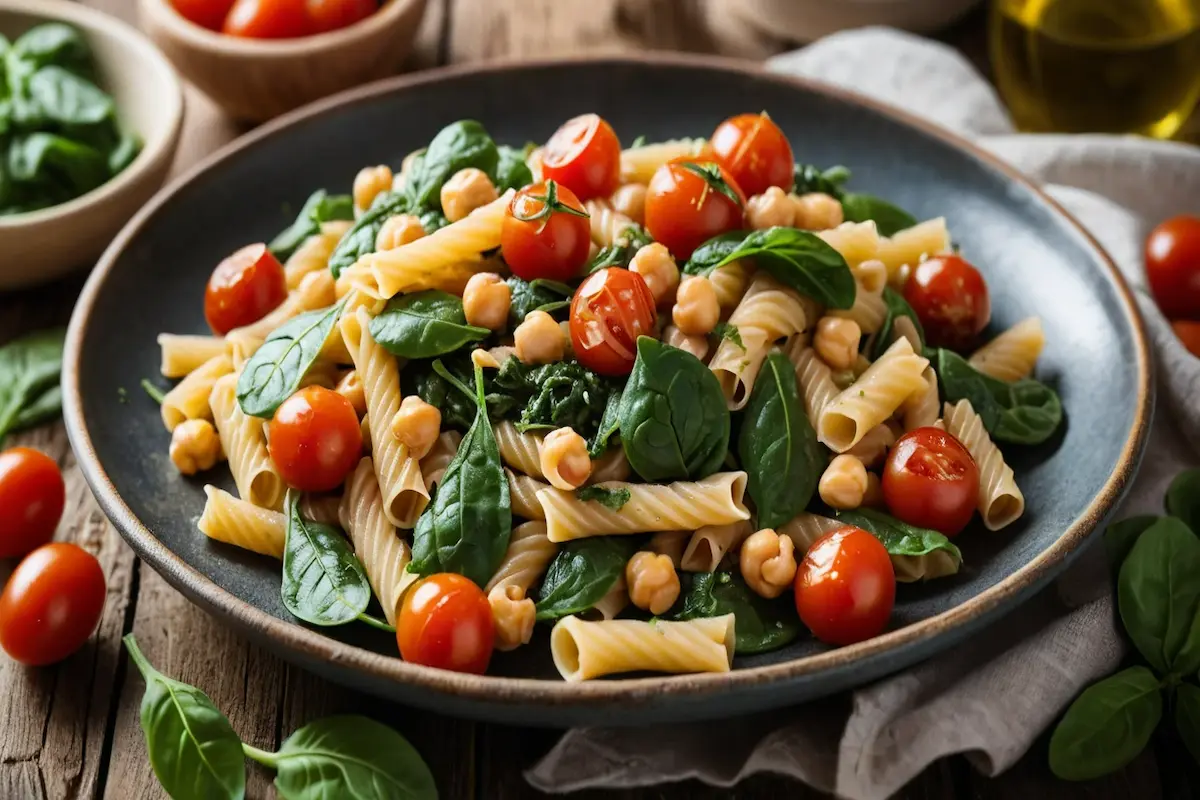Protein pasta has become a popular choice for those looking to boost their nutritional intake without sacrificing flavor. Packed with higher levels of protein and fiber, it provides a healthier alternative to traditional pasta made from refined wheat. In this comprehensive guide, we’ll explore everything you need to know about high-protein pasta, including its types, nutritional benefits, culinary applications, and how to incorporate it into your diet.
Throughout this article, we’ll highlight different varieties of protein-enriched pasta, suggest delicious recipes, and answer some of the most common questions about this nutritious food. Plus, we’ll link to helpful resources where you can discover more ideas for incorporating protein pasta into your meals.
What is Protein Pasta?
Protein pasta is a variation of traditional pasta made from high-protein ingredients, such as chickpeas, lentils, or beans, instead of wheat. These pastas offer significantly higher protein content compared to regular pasta, which tends to be low in protein and made from refined carbohydrates. Many of these options are also gluten-free, making them a great choice for those with dietary restrictions.
By using legumes and alternative grains, these pastas have quickly become popular among health-conscious individuals and those following plant-based diets. Whether you’re looking to increase protein intake, improve digestive health, or try something new, these pastas provide a versatile and delicious solution.
Types of High-Protein Pasta
There are several types of protein-enriched pasta available, each offering unique flavors and textures. Let’s dive into the most common varieties.
Chickpea-Based Pasta
Chickpea pasta, like the popular brand Banza, is made from chickpea flour. It offers approximately 20 grams of protein per serving, along with 8 grams of fiber. This type of pasta is naturally gluten-free and is available in many shapes, from spaghetti to penne. It’s perfect for those looking for a plant-based, protein-rich option.
- Nutritional Benefits: High in protein and fiber, chickpea pasta supports muscle growth and digestive health.
- Flavor and Texture: It has a nutty flavor and a firm texture that holds up well when cooked.
Discover more ideas in Crisp Fresh Recipes for creative ways to enjoy chickpea pasta in your meals!
Lentil and Bean Pastas
Lentil pasta is another excellent choice, made primarily from lentils and sometimes other beans such as black beans or green peas. Like chickpea pasta, lentil pasta is rich in plant-based protein and fiber, making it an ideal option for those looking to add more legumes to their diet. It has a mild flavor and a firm, hearty texture that works well with a variety of sauces.
- Nutritional Benefits: Packed with protein, fiber, and essential minerals like iron and zinc, lentil pasta is a great addition to a balanced diet.
- Flavor and Texture: Lentil pasta has a subtle taste that pairs perfectly with both light and rich sauces.
This type of pasta is also ideal for people following gluten-free or vegan diets, as it’s made entirely from legumes.
Banana Pasta
Banana pasta, made from green banana flour, is a more recent addition to the world of protein-rich pasta. Green bananas are dried and milled into a fine powder, which is then used to make pasta. Though still somewhat niche, banana pasta is gaining traction for its nutritional benefits and versatility.
- Nutritional Benefits: Banana pasta is a good source of resistant starch, a type of fiber that helps regulate blood sugar levels and promotes gut health.
- Flavor and Texture: It has a mild flavor that blends easily with different types of sauces.
If you’re seeking something unique, banana pasta could be a fun and nutritious addition to your kitchen.
Find out more about banana pasta in this article for all the details on its health benefits and how to cook with it.
Nutritional Benefits of High-Protein Pasta
One of the primary advantages of protein pasta is its superior nutritional profile when compared to traditional pasta. Here are some of the key benefits:
- Increased Protein Intake: Unlike traditional pasta, which is low in protein, protein-rich pasta offers a substantial boost. Whether it’s chickpeas, lentils, or beans, these options provide up to 20 grams of protein per serving, supporting muscle growth and repair.
- Improved Satiety: The higher protein and fiber content help keep you feeling full longer, which can be beneficial for weight management and appetite control.
- Better Digestive Health: Made from legumes and alternative grains, high-protein pastas are rich in fiber, which is essential for maintaining a healthy digestive system.
- Lower Glycemic Index: Many protein pastas have a lower glycemic index than regular pasta, helping to prevent rapid spikes in blood sugar.
- Gluten-Free: Many of these pastas are naturally gluten-free, making them an excellent choice for those with gluten sensitivities or celiac disease.
In addition to these benefits, protein pasta is rich in minerals like magnesium, iron, and zinc, all of which contribute to overall health and vitality.
Culinary Applications of High-Protein Pasta
One of the great things about protein pasta is its versatility. You can use it in place of regular pasta in virtually any dish. Whether you’re craving a classic spaghetti dinner or something more creative, high-protein pasta is an excellent choice.
Traditional Pasta Dishes
Protein pasta is perfect for traditional pasta dishes. Simply pair it with your favorite sauce – from marinara to creamy Alfredo – and you’ve got a satisfying, nutrient-dense meal. The firm texture of protein pasta allows it to hold up well with hearty sauces, making it a great choice for classic pasta recipes.
Protein Pasta Salads
Another way to enjoy high-protein pasta is by making a nutritious pasta salad. Toss it with fresh vegetables, a simple vinaigrette, and your favorite seasonings for a light yet filling meal. You can even add protein-rich toppings like grilled chicken or tofu to further boost the protein content.
Soups and Stews
Protein pasta also works wonderfully in soups and stews. Adding it to your favorite broth-based dishes can make them more filling without adding extra calories. The pasta absorbs the flavors of the soup, creating a rich, comforting dish.
Frequently Asked Questions About Protein Pasta
Is Protein Pasta Suitable for Gluten-Free Diets?
Yes, many types of high-protein pasta, such as chickpea and lentil pasta, are made from naturally gluten-free ingredients. This makes them a great choice for those with celiac disease or gluten intolerance.
How Does the Taste of Protein Pasta Compare to Regular Pasta?
While protein pasta may have a slightly different texture and flavor, many brands have worked hard to replicate the taste and mouthfeel of traditional pasta. Most people find the nutty flavor of chickpea pasta or the mild taste of lentil pasta to be a delicious alternative.
Can I Use Protein Pasta in Any Recipe?
Absolutely! Protein pasta can be substituted in any recipe that calls for regular pasta. Whether you’re making a salad, casserole, or a simple pasta dish, you can easily incorporate protein pasta into your meals without compromising flavor or texture.
Conclusion
Incorporating protein pasta into your diet is a simple and delicious way to enhance your nutritional intake. Whether you’re aiming to increase your protein consumption, manage your weight, or enjoy a gluten-free meal, there are plenty of options available. From chickpea pasta to lentil-based varieties, high-protein pasta provides a versatile and satisfying solution for health-conscious eaters.
Experiment with different types and recipes, and soon you’ll find that protein pasta becomes a regular part of your meal planning.
For more delicious recipes and meal ideas, discover more ideas in Crisp Fresh Recipes to make the most out of your high-protein pasta experience!

